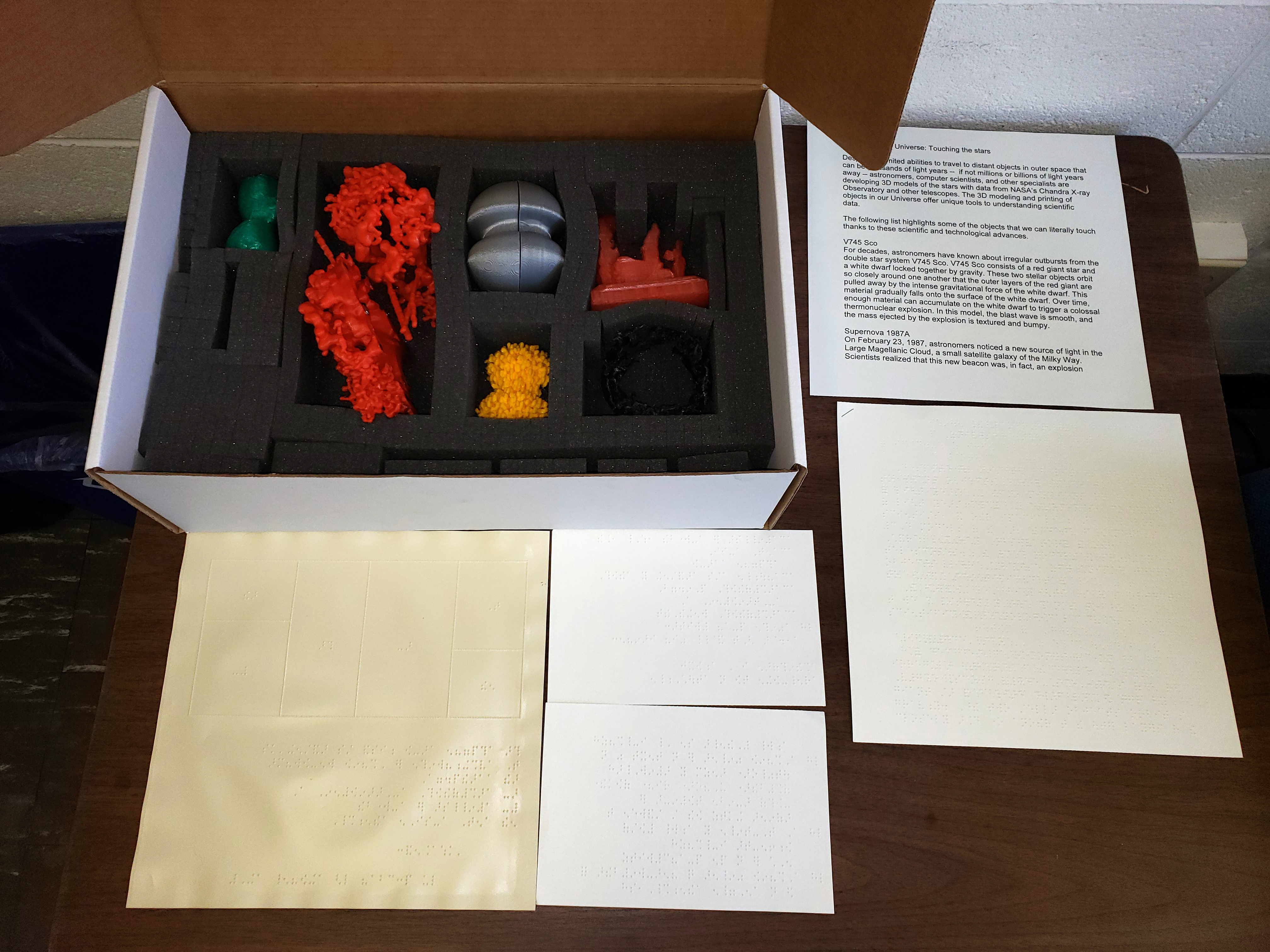Touchable Universe in a Box
with NASA's Universe of Learning
Whether we are feeling the warmth from our closest star, the Sun, during the day, or learning about the majestic array of planets, stars, and galaxies in the greater Universe, the sky connects us all. With this kit of activities, we invite you to explore aspects of your Universe with us. The Touchable Universe kit contains five 3D prints created from NASA data including three models from Chandra: Supernova remnant Cassiopeia A (which also uses NASA infrared and ground-based optical data), Supernova 1987a, and the double star system and nova V745 SCO; as well as two models from Hubble and other data: Eta Carina, a bright star system, and the star-formation region known commonly as the Pillars of Creation.
• Five 3D prints:
-Supernova remnant Cassiopeia A
-Supernova 1987a
-Double Star System and Nova V745 SCO
-Eta Carina
-Pillars of Creation (also known as the Eagle Nebula).
• Audio files with descriptions for each of the 5 3D-printed objects included.
• A tactile and Braille poster series mounted on still styrene that cover science topics of eruptions, shadows, wind, erosion, outflows, seeding and spirals.
• Audio files of the text from the Braille panels.

All photos on the page, credit: NASA/CXC
cxcpub@cfa.harvard.edu
617-496-7941
60 Garden Street,
Cambridge, MA 02138 USA
Art Direction/Design: Kristin DiVona
Web Developer: Khajag Mgrdichian
Chandra X-ray Center, Operated for NASA by the Smithsonian Astrophysical Observatory. This site was developed with funding from NASA under contract NAS8-03060 | Privacy | Accessibility
Additional support from NASA's Universe of Learning (UoL). UoL materials are based upon work supported by NASA under award number NNX16AC65A to the Space
Telescope Science Institute, working in partnership with Caltech/IPAC, Jet Propulsion Laboratory, Smithsonian Astrophysical Observatory.

